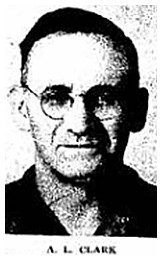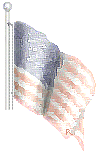They’re Waiting and Hoping
Japs Return to Pearl Harbor
A. L. Clark of Mason City on
First Convoy to Hawaii After Dec. 7
Our forces at Pearl Harbor are expecting the Japs back again – and hoping they’ll come, according to A. L. Clark, 422 First street northeast, just back from seven months of instruction for the navy on the repair of aviation engines in Hawaii.
The Mason Cityan was on the first convoy to reach Honolulu after Dec. 7 and admits that Pearl Harbor was a terrible sight. But the shipping in the harbor bore the brunt of the attack, he asserted. “The Japs intended to take Pearl Harbor that day and they didn’t blow up any oil storage tanks, for example.”
Mr. Clark credited the soldiers and sailors with handling a considerable amount of fifth column activity in so efficient a manner that the danger was averted.
The Japs may take Pearl Harbor yet, he said, but he does not expect them to.
“But the Japs are fighting a total war and in modern warfare one doesn’t know what can happen. And the Japs have absolutely no regard for losses. If they decide to pay the price, they might take Pearl Harbor.”
“But knowing the type of boys we have there to do the job gives one a lot of confidence,” he added immediately. He paid high tribute to the American army and navy fliers. “They take up carrier based planes which have no business mixing with a Zero fighter and outmaneuver and outfly the Japs time after time.”
On the relative merits of the Japanese and American planes he had this to offer: The American P-40, a land-based plane, can outfly any Jap ship. But the Japs have strengthened the fuselage and showed the landing speed of the Zero fighter so that it can land on a carrier. The Zero can outperform American carrier based planes.
The marvelous success of the Flying Fortress he credited in large part to the gunners on the planes. He asserted that the cream of the gunners are assigned to the Fortresses and “when they press a trigger they’ve got something. They don’t miss.”
Half of a piston from the first Japanese plane shot down at Pearl Harbor was brought home by Mr. Clark in the shape of an ashtray. He made it himself after the plane was salvaged where it was shot down by a machinegun crew. On the piston are the words: “Made in U. S. A.”
Some of the prisoner brought from the Japanese ships sunk in the battle of Midway were brought to Pearl Harbor and he saw them there, Mr. Clark said. They were small in stature and literally skin and bones. When food was brought to one group on trays, he asserted, the prisoners ate the food on one of the trays and wanted to save the rest.
The incident was mentioned by Mr. Clark in connection with his emphasis on the “total war” attitude of the Japs. Much of the space devoted on American warships to crew quarters, he added, is used on Japanese ships for ammunition.
A regiment of Negro troops which arrived in Hawaii about two months ago was rated by the Mason Cityan as one of the finest fighting units he had ever seen. Army as well as navy concentrations on Hawaii have increased considerably, he admitted, since he arrived there in January.
In his seven months there he was in charge of a machine shop with 50 navy men as students. He not only was responsible for their instruction but in addition his shop during July tore down and completely rebuilt 146 airplane engines. The record for a month prior to this year was 40 engines.
His one objection to life at Pearl Harbor was poorly cooked food served in the civilian cantonments in which more than 4,000 are fed. The food has improved rapidly during the last two months, however, he said, but he already had trained another civilian to replace him and when given the chance to get out took it.
Monday he is on his way to an unknown destination to work for the army ordnance department teaching the repair of air cooled tank engines.
His family remains in Mason City – except his son, Arthur L. Clark, who is stationed in the army air corps in Mississippi. “I taught him how to fly a couple of years ago,” said his father, “but now he’s learning it all over again.”
Source: The Globe-Gazette, Mason City, Iowa, Saturday, August 29, 1942, Page 7 (photo included)
![]()
Like Father, Like Son
Different branches of the service attracted Arthur L. Clark, who joined the navy last December, and his son, Arthur L. Clark, Jr., who entered the army in October, 1941.
Source: The Globe-Gazette, Mason City, Iowa, Saturday, October 30, 1942, Page 31
![]()

